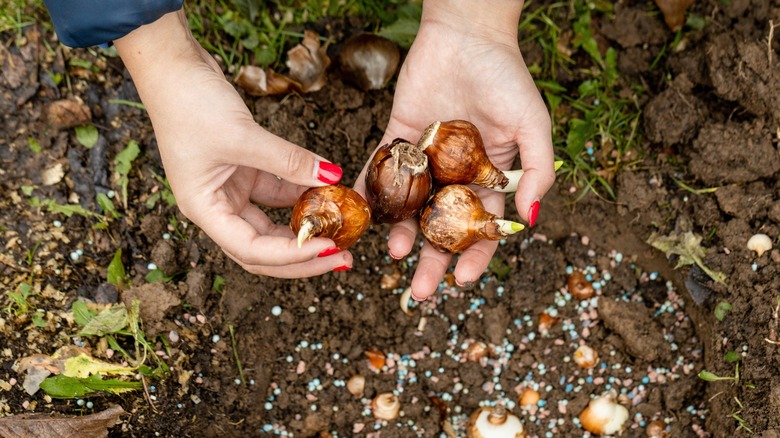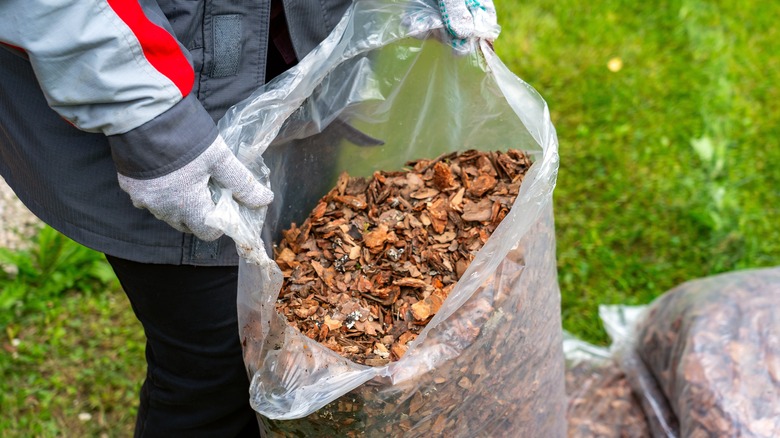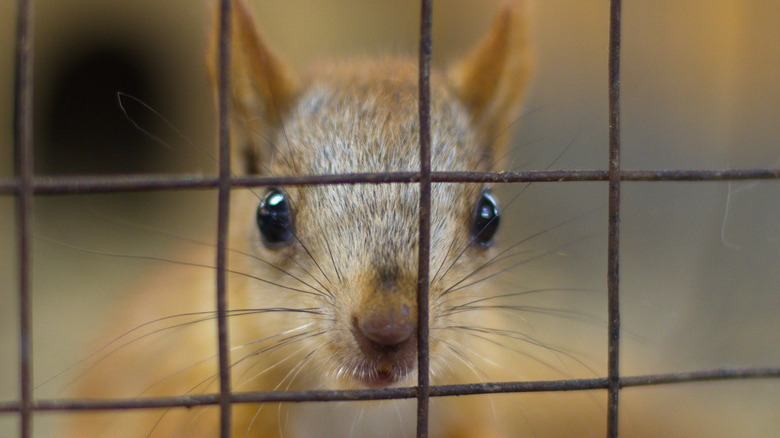Essential Tips For Protecting Fall Daffodil Bulbs
We may receive a commission on purchases made from links.
If you enjoy the sight of daffodil seedlings poking their heads through the soil to herald the approaching spring, fall is the time when you plant daffodil bulbs. The ideal time to get the bulbs in the ground is before the soil starts to freeze, with the timing varying depending on which USDA growing zone you live in. But regardless of the region, your newly planted daffodil bulbs face the onslaught of several critters, for whom your bulb planting season coincides with the pre-winter food gathering season.
Now, you may shake your head and think that daffodils are naturally immune against critter attacks, as daffodil bulbs are poisonous, and most animals don't find them appetizing. And you're right — the hungry creatures in your yard would much prefer you planted tulips instead of daffodils. But as unappealing as daffodil bulbs are, they may still get dug up by undiscriminating critters that have come to pillage your garden, including chipmunks, voles, deer, skunks, and even dogs and cats. And if you add fertilizer to the soil when planting the bulbs, you actually encourage this type of behavior in rodents.
Foregoing pungent fertilizers, like those based on fish emulsion or bone meal, is a good way to keep unwanted guests away from your daffodils. But there are other measures you can take to discourage critters from uprooting the bulbs. For maximum protection, you can even set up physical barriers before planting the daffodils to keep the pests out.
Easy ways to discourage critters from going after the bulbs
The best way to discourage critters from digging up your daffodil bulbs as they're stocking up on food for the season is to get rid of any scents or items that may be appealing to them. As we said above, avoid any organic fertilizers with a strong smell (on a side note, nitrogen-based fertilizer should also be avoided, since it can cause the bulbs to rot). But by the same token, make sure you leave no traces of the bulb-planting after you're done. Recently disturbed soil sparks curiosity in rodents, and they are usually tempted to check the locations for buried food sources. As they do so, they may uproot the daffodil bulbs. To keep the critters uninterested in your newly planted bulbs, cover the planting location with dead leaves or bark mulch — this will obscure your recent planting activities.
On top of masking traces of gardening efforts, a good strategy is to divert the foraging animals with other, more appetizing and easily accessible food sources. All you need to do is create a feeder and fill it with foods that appeal to rodents, such as nuts and fresh vegetables. With a yummy meal in view, they will likely leave the daffodil beds alone. What's more, this tactic will draw squirrels' attention away from other sources of food in your garden, like your winter crops or the bird feeder — it's a win-win-win.
How to keep the more stubborn critters out of your daffodil beds
Physically preventing creatures from making their way to check out the daffodil beds is the most surefire but humane way to keep critters out of your yard and daffodil beds. There are several types of barriers you can create, but enclosing the area with a wire cage is the most effective of these.
If you opt to construct a wire cage, start by picking out the right type of fencing material. Chicken wire generally works; just make sure the mesh is small enough to block the path of smaller rodents, like chipmunks. Fortunately, chicken wire comes in an array of sizes, with some mesh smaller than an inch across, like this ½-inch chicken wire from Goldpeak. To line the bottom of the hole where you'll plant the bulbs, you can use a hardware fabric instead. Apart from the fencing material, you'll need heavy objects to hold the chicken wire down. Large stones or wood planks of wood work well, but for greater security, you can use stakes or staples, like these 12-inch galvanized staples from GROWNEER.
You'll have to create the wire cage as you plant the daffodils. Start by digging a trench to a depth of 7 inches. This depth will accommodate the 6 inches needed to plant the daffodil bulbs, plus another inch for the mesh layer and soil below. With the hole dug, lay down a layer of the hardware cloth at the bottom of the trench and add an inch of soil on top before setting the daffodil bulbs. Then cover the bulbs with soil, lay the chicken wire or hardware mesh on top, and weigh the fencing down or secure it with garden staples.


